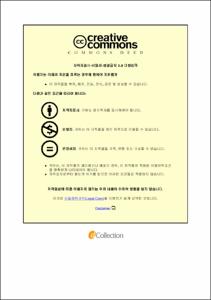Cell Surface Display of Peptides to Recover Metals from Electronic Waste
- Abstract
- In an attempt to develop a system towards bioremediation of electronic waste (EW). Electronic have become an integral part of everyday life. The persistent growth in consumption and reduced life time of electrical and electronic goods resulted in piling up of EW. It is considered to be a huge problem for the environment. According to European Union 20 raw materials for the manufacture of electronics are at greater risk of supply. However EW can be considered as a valuable source of precious metals. Recycling of EW can mitigate high prices and limit reliance on exhaustible natural sources for metals. This study is focused recovery of lithium; cobalt and indium which are considered to be essential components for the manufacture of electronics. The technique employed in this study is microbial cell surface display (CSD) of metal binding peptides (MBP). CSD allows the expression of proteins, peptides and enzymes on the microbial surface with the aid of anchoring motif. In this study MBP for lithium, cobalt and indium are displayed on the surface of E. coli. Lithium and cobalt are rare and valuable elements used for its application in lithium-ion batteries (LIBs). Due to increased application of LIBs in portable electronic devices and vehicles, accumulation of spent batteries is huge. It is essential to recycle the spent LIBs.
In order to support a sustainable society based on renewable energy, it is necessary to explore appropriate recovery methods of lithium from various sources. Here we demonstrate a strategy for lithium extraction from battery polluted water using the whole-cell bio sorbent displayed lithium binding peptide (LBP). Three different lithium binding pentapeptides (GPGNP (LBP1), GPGDP (LBP2), and GPGAP (LBP3)) were displayed on the surface of E. coli as a fusion protein by cell surface display (CSD). The efficiency of the three different LBPs was evaluated in various environmental conditions such as Luria-Bertani (LB) medium, artificially polluted wastewater (AWW) and lithium battery polluted wastewater (LBWW). Also, the lithium binding efficiency of the bio-sorbents was enhanced by developing dimeric, trimeric and tetrameric constructs. Among which trimeric construct of LBP2 showed maximum lithium adsorption and the reason for the reduced performance by the tetrameric construct was determined by membrane topological study. The metal-peptide affinity resulted in the development of bio-friendly lithium nanoparticles on the surface of E. coli as visualized by Scanning Electron Microscopy (SEM) and Transmission Electron Microscopy (TEM). The application of surface displayed LBP system to the real wastewater was conducted by employing the LBWW for plant irrigation after lithium removal. The method developed in this study describes a new path for green synthesis of metal nanoparticles and at the same time bioremediation of wastewater based on the design of synthetic peptides and their expression on the microbial surface.
A recombinant E. coli was developed by cell surface engineering of cobalt binding peptide (CP1&CP2). The peptides were displayed with the aid of YiaT as an anchoring motif.
The structure of the recombinant peptide (YiaTCP2 &YiaTCP3) was modelled. The difference in binding potential towards cobalt was evaluated. Further the ability of CP2 & CP3 to adsorb and recover cobalt was evaluated in three different environments including Luria-Bertani(LB), artificially polluted wastewater (AWW) and battery polluted wastewater (BWW). CP3 was observed to recover higher percentage of cobalt (1907.766 μmol/g drycell weight) when compared to CP2. Further the physio-chemical properties of recombinant cells after cobalt adsorption was characterized by fourier transform infrared spectroscopy (FT-IR), UV-Vis spectroscopy. The recombinant cells were exposed to cobalt at various pH (3, 5, 7, 9 and 11). The bound cobalt was observed to be a nano sized particles and visualized by scanning emission microscopy (SEM) and transmission emission microscopy (TEM). The presence of cobalt on the cell surface was mapped by energy-dispersive X-ray spectroscopy (EDX). Further the recombinant strains bound with cobalt is used for photocatalytic reduction of methylene blue. The percentage of reduction was found to be 59.52%.
In Cell surface display the anchoring protein is vital for the efficient display of peptide on the microbial surface. In this study, a novel anchoring motif was developed with an outer membrane protein YaiO. Its topological study revealed the presence of 7 loops for the display. The loop 7 was truncated at 237th amino acid residue to expose the peptides in the extracellular region. The efficiency of YaiO as an anchoring protein was evaluated by displaying indium binding peptides (IBP 1 & 2) SLAPDSTWFALF, TNSSSQEWAIP respectively. The ability of the displayed peptide to recover indium was analyzed. In addition, the recombinant E. coli were elongated by cisplatin treatment to increase the indium bio-adsorption. The cells with adsorbed indium were visualized by SEM and TEM techniques. The indium particles present on the bacterial surface was mapped by EDS analysis. Further Raman spectroscopy reveals that the indium is found as cubic In2O3.
- Issued Date
- 2018
- Awarded Date
- 2019-02
- Type
- Dissertation
- Alternative Author(s)
- Vidhya Selvamani
- Affiliation
- 울산대학교
- Department
- 일반대학원 생명환경공학전공
- Advisor
- 홍순호
- Degree
- Doctor
- Publisher
- 울산대학교 일반대학원 생명환경공학전공
- Language
- eng
- Rights
- 울산대학교 논문은 저작권에 의해 보호받습니다.
- Appears in Collections:
- Life Science > 2. Theses (Ph.D)
- 파일 목록
-
-
Download
 200000180645.pdf
기타 데이터 / 8.02 MB / Adobe PDF
200000180645.pdf
기타 데이터 / 8.02 MB / Adobe PDF
-
Items in Repository are protected by copyright, with all rights reserved, unless otherwise indicated.